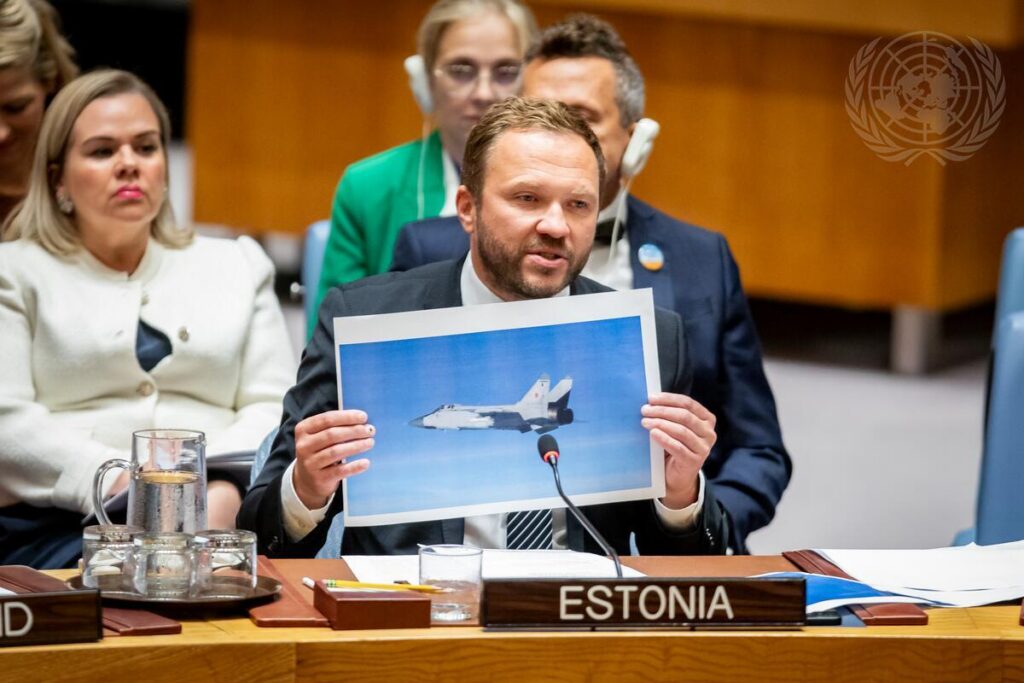The United Nations Security Council convened in emergency session on Monday after three Russian MiG-31 fighter jets penetrated Estonian airspace, in what Tallinn branded the most serious breach of its borders in years.
The heavy interceptors – capable of carrying Kinzhal hypersonic missiles – crossed into Estonia near Vaindloo Island on 19 September, flying without flight plans, transponders or radio contact. They loitered for nearly twelve minutes before NATO aircraft forced them back.
“This is not a mistake, it is a deliberate provocation,” Margus Tsahkna, Estonia’s foreign minister, told the Council in New York, holding up radar images of the flight path. “Russia not only violated Estonian airspace, it lied about it. Hard evidence is here. Please don’t lie again.”
It was the first time in Estonia’s 34 years of UN membership that the country had demanded such a session. Tsahkna said the jets had penetrated up to ten kilometres into sovereign territory and come within minutes of Tallinn. “By openly violating our airspace, Russia is undermining principles essential to the security of all UN member states.”
Allies close ranks
UN officials echoed Estonia’s alarm. Miroslav Jenča, Assistant Secretary-General for Europe, warned that “violations of sovereign countries’ airspace are unacceptable” and that recent incidents over Poland and Romania “underscore the already high tensions that endanger European security”.
Denmark’s foreign minister, Lars Løkke Rasmussen, called the episode “reckless and dangerous” and urged Moscow to “step back”. Greece’s foreign minister, Giorgos Gerapetritis, noted that repeated violations were “not mere coincidences” but a pattern.
Poland’s foreign minister, Radosław Sikorski, was blunter still: “If another missile or aircraft enters our airspace without permission – and gets shot down – please don’t come here to whine about it. You have been warned.”
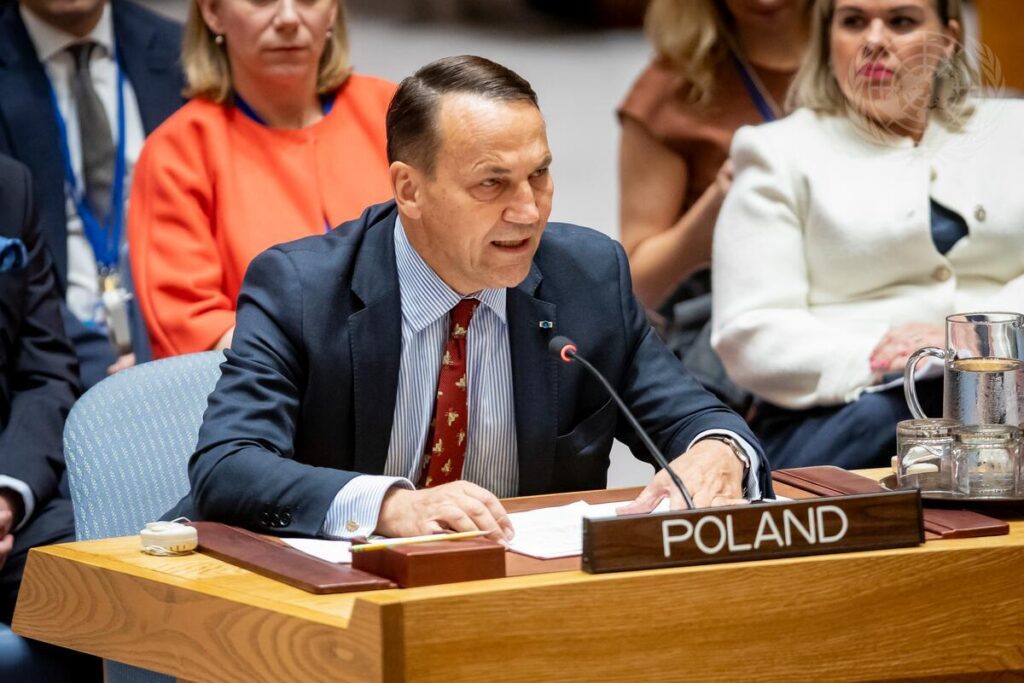
Romania’s Oana-Silvia Țoiu urged swift action, warning that even a perceived lack of response could embolden Moscow. Kaja Kallas, the EU’s foreign policy chief, described the incident as “an extremely dangerous provocation” and insisted Europe “must not show weakness”.
Moscow isolated, Estonia buoyed
Russia’s representative dismissed the incursion as “imagined” and accused Tallinn of “Russophobic hysteria” before leaving the chamber – underlining Moscow’s isolation. China, usually cautious, refrained from endorsing Russia’s account.
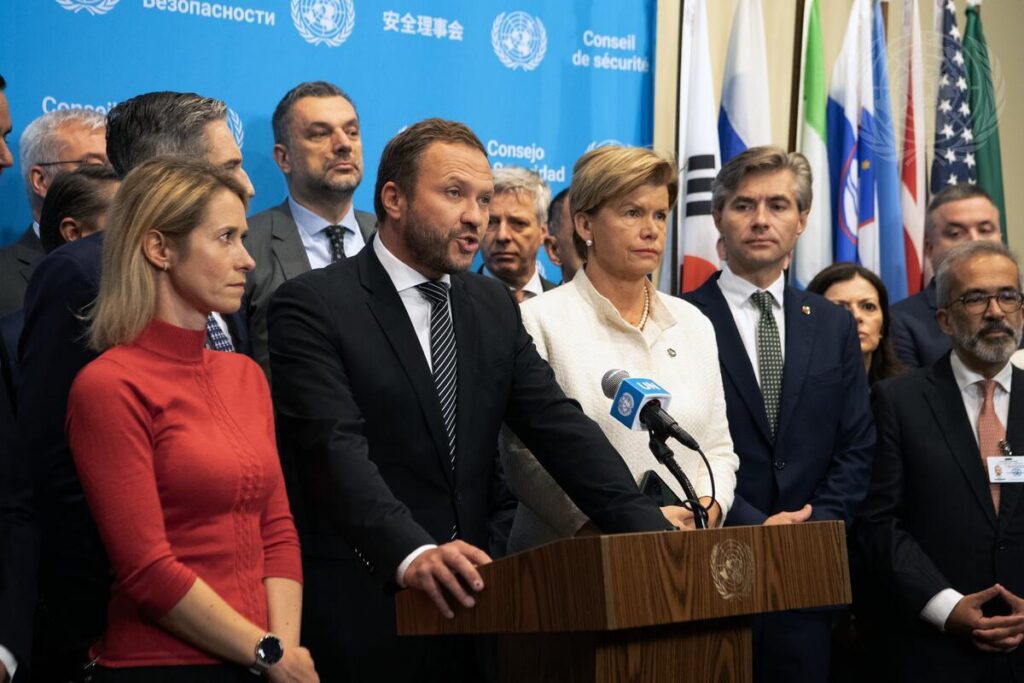
Marko Mihkelson, chairman of the Estonian parliament’s foreign affairs committee, said the session “delivered the maximum result for the diplomacy defending our security interests”. By forcing the issue onto the Council’s agenda at the start of the UN General Assembly’s high-level week, Estonia ensured global attention.
“The outcome confirmed that calling the meeting was the right step: in addition to briefing the world and rebutting Russia’s pitiful lies, we secured strong backing from allies and friends across the globe,” Mihkelson said. “The fruits of years of work are clear: Estonia is not alone.”
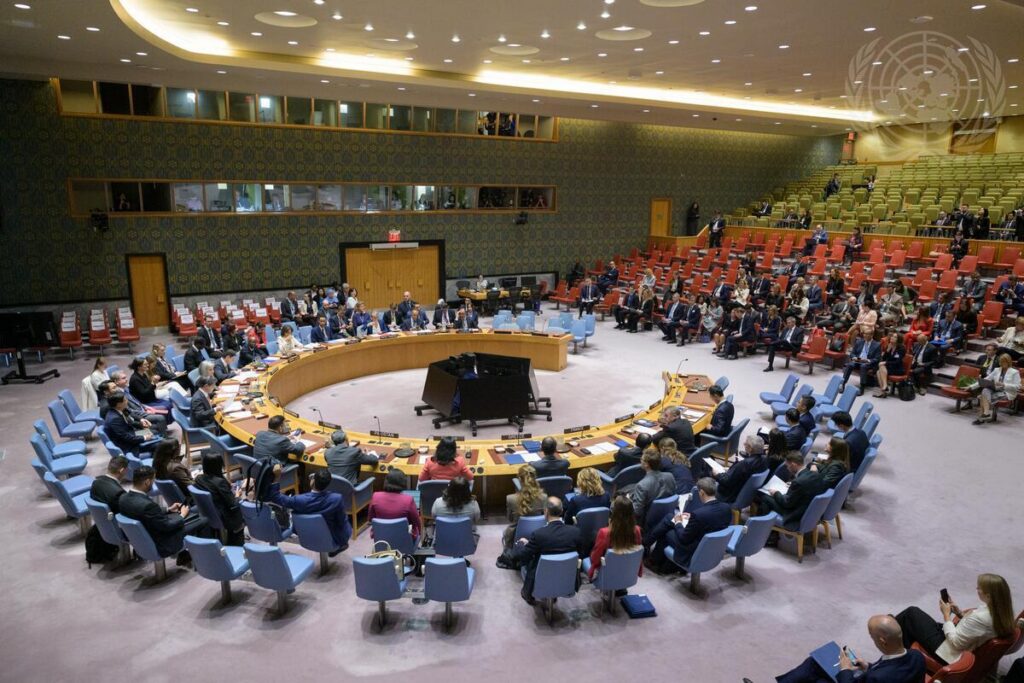
NATO on alert
Prime minister Kristen Michal convened Estonia’s security cabinet on the day of the violation and triggered NATO’s Article 4 – the Alliance’s consultation mechanism when a member state feels threatened. He said the incident showed why the alliance’s response “must be united and strong”, and later noted there were “clear parameters” for shooting down intruding jets if necessary.
The violation was the fourth against Estonia this year but the first involving a formation of supersonic fighters. NATO confirmed Finnish aircraft first intercepted the Russian jets over the Gulf of Finland before Italian F-35s from Ämari airbase escorted them out.
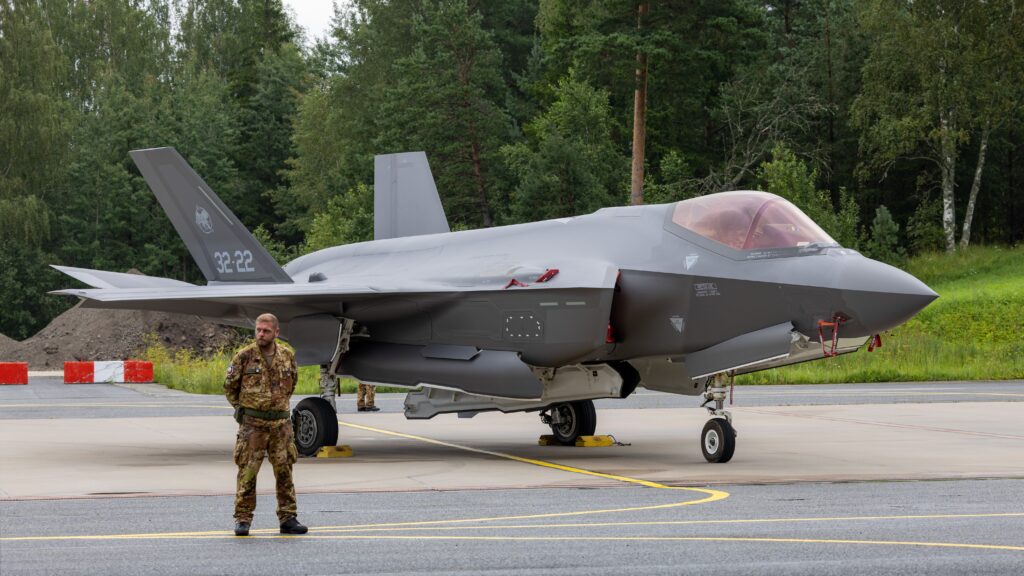
For Estonia – NATO’s smallest frontline state – the sight of Russian aircraft loitering above its skies for twelve minutes was both a show of Moscow’s intent and a reminder of Tallinn’s reliance on allied air power. As one Estonian official put it: “The question is not whether Russia will try again – but how we will respond.”

